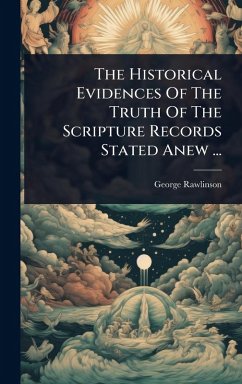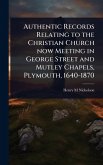The Historical Evidences Of The Truth Of The Scripture Records Stated Anew presents George Rawlinson's 1859 Bampton Lectures delivered at Oxford University. This significant work examines the historical context and evidence supporting the veracity of scripture. Rawlinson meticulously explores various aspects of ancient history and archaeology, offering a reasoned defense of the Bible's historical accuracy. Through eight lectures, Rawlinson addresses critical questions and challenges to the scriptural narrative, providing insights into the historical, cultural, and archaeological contexts of the Old and New Testaments. This volume remains relevant for those interested in understanding the historical foundations of Christian belief and the ongoing dialogue between faith and reason. A valuable resource for students, scholars, and anyone seeking a deeper understanding of the intersection of history and scripture. This work has been selected by scholars as being culturally important, and is part of the knowledge base of civilization as we know it. This work was reproduced from the original artifact, and remains as true to the original work as possible. Therefore, you will see the original copyright references, library stamps (as most of these works have been housed in our most important libraries around the world), and other notations in the work. This work is in the public domain in the United States of America, and possibly other nations. Within the United States, you may freely copy and distribute this work, as no entity (individual or corporate) has a copyright on the body of the work. As a reproduction of a historical artifact, this work may contain missing or blurred pages, poor pictures, errant marks, etc. Scholars believe, and we concur, that this work is important enough to be preserved, reproduced, and made generally available to the public. We appreciate your support of the preservation process, and thank you for being an important part of keeping this knowledge alive and relevant.
Bitte wählen Sie Ihr Anliegen aus.
Rechnungen
Retourenschein anfordern
Bestellstatus
Storno








